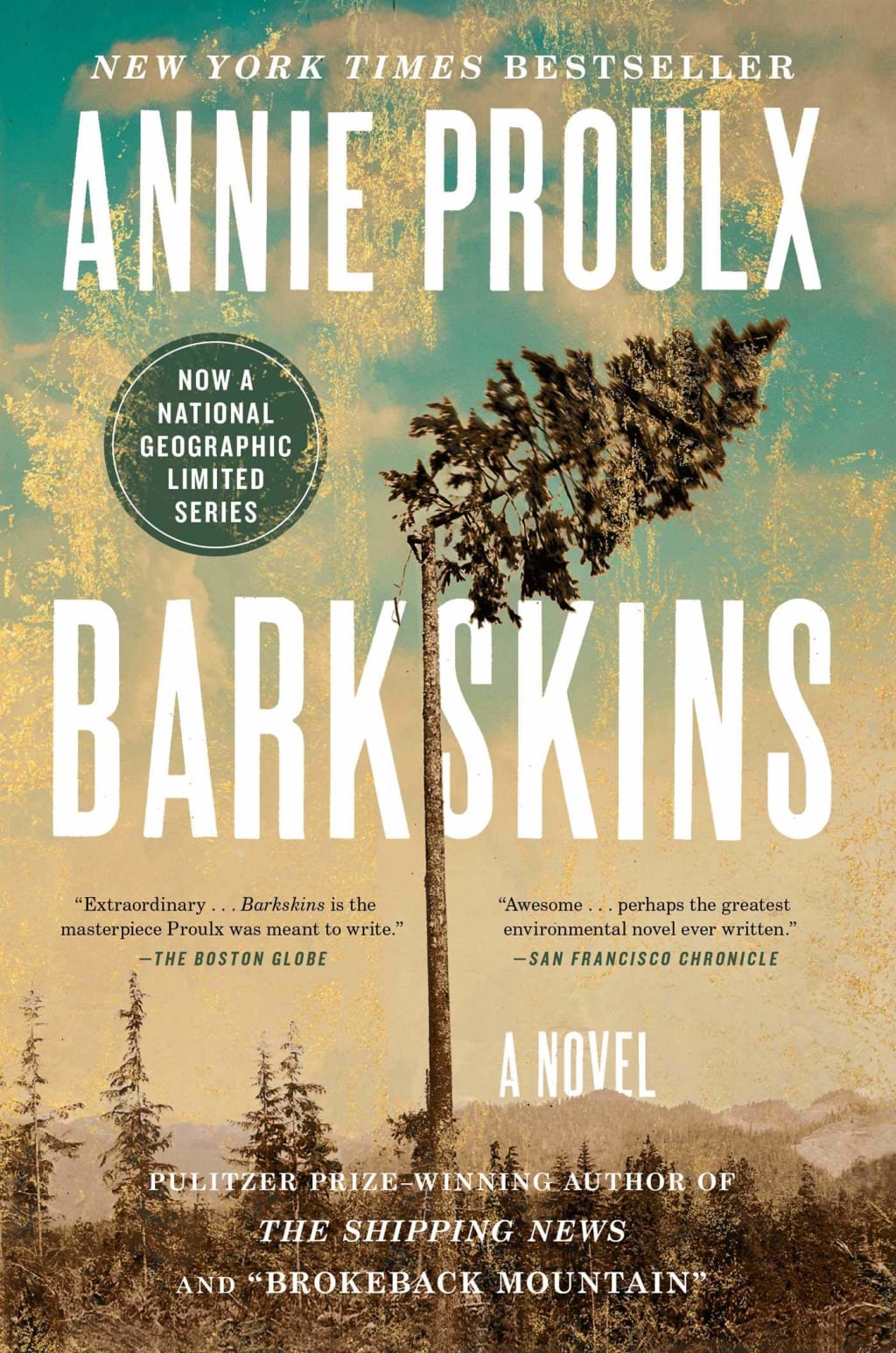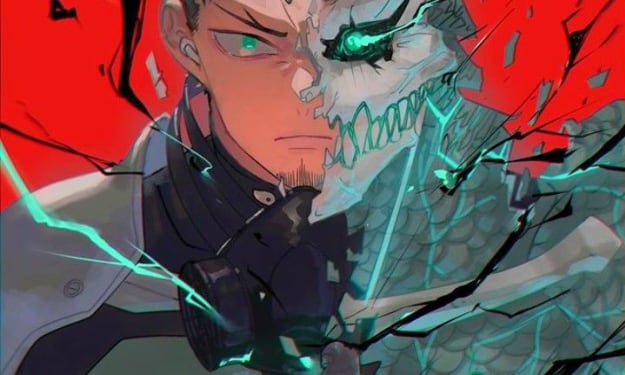"Barkskins" by Annie Proulx
First Impressions (Pt.15)

“Barkskins” by Annie Proulx, the writer of “Brokeback Mountain” and “The Shipping News” has often been described as ‘bold and visionary’ or ‘energetic’ with hints of ‘uncompromising splendour’ and ‘extraordinary power’ by various reviews. The reason for these powerful adjectives in use here is primarily because of the way in which nature is depicted throughout the novel. The novel centres around nature as the destruction of the forests seems to be the main point of concern throughout the entire novel for almost every generation of character and yet, the characters cannot seem to stop the violent push-backs that nature is giving them with brute force. Much like the push-back of the natural world in “Frankenstein” when the doctor tries to work nature to his own plans, “Barkskins” demonstrates that humans are a minor part of the natural landscape and however long we are here, the landscape will outlive us, it will be more powerful than we are and ultimately, it will always be above us in ways we could never comprehend. A sublime take on the destruction of the forest, this book seeks out characters who live and die by harvesting wood and ultimately they pay great prices for it. The natural world does not though, just include the forest areas, it also includes the natural landscape, the weather and the way in which night and day are described as being different atmospheres to different characters at different times.
Within this exploration of the natural world, the reader seeks to find not only a tone, but a character and a soul within it. The natural world being constantly alive and energetic, filled with life and power even when the human characters of the novel are not. Having both a romanticist feel with touches of the self-destructive southern gothic, this novel seeks to show the reader both sides of the natural world, both beautiful and dangerous and completely harmless but ultimately more powerful than anything humans have ever experienced or ever will. This novel does not only tell the reader one story in one place, but many stories of many generations in many places around the world for the use of solidifying the theory that nature cannot be defeated by any human in any location at any time ever. This is highly effective if the reader is to study the lines of the demise of the various more destructive characters as well as the ways in which they behave towards others.
The fact that the natural world is yet unknown in its entirety to the characters is something that authors have been attempting to depict in literature for years. In “Barkskins” it comes across as the unfamiliar, but not the threatening as the characters are on travels:
“Unknown plants and curious blossoms caught their eyes, funereal spruce and hemlock, the bright new-growth puffs at the tips of the pine branches, silvery tossing willow, the mint-green of new birch - a place where even sunlight was green…” (p.6)
This is an obvious non-threatening statement to the unknown but also presents the reader with the way in which nature can overwhelm the subject. The statement that everything has a greenery to it around the character obviously makes the natural landscape look bigger, wider, deeper and altogether more powerful and more intense than the character can physically comprehend. The foreshadowing is that if the character were to work against this, it would not do their being too many favours and ultimately, the overwhelming nature of the surroundings would consume them in a possible threatening and violent fashion.
However, nature can turn incredibly threatening when either the characters work against it or seek it out when it is more sensory than ever - during the night. How the characters interact with the natural world at night is based mostly on their social fear of the dark rather than the natural world itself being threatening and harmful:
“The moon was a slice of white radish, the shadows of incomparable blackness. The shapes of the trees fell sharply on the snow, of blackness so profound they seemed gashes into the underworld. The days were short and the setting sun was snarled in rags of flying storm cloud. The snow turned lurid, hurling away like cast blood. The dark ocean of conifers swallowed the afterglow. Rene was frightened by the intensity of the cold even in the weak sunlight…” (p.23)
It is very clear here that the character is not afraid of the natural world being particularly harmful itself but instead, he has a social fear of the dark and the cold since the dark takes away most of his sense of spacial awareness and in the cold, he can suffer and die. The other statements about the intense harm that the natural world can do, along with the comments about the underworld are simply his projections of his fear upon the rather safe and calm natural world. But, the reader still gets the impression that the natural world, with its tall trees, its wide oceans, its depth and space, is overwhelming and, could at any time, become a far more dangerous place for the character to reside in. It becomes more and more intense as the characters start inflicting their own desires upon the natural world, in this case, the forest:
“Five years of Monsieur Trepagny’s talk of supernatural horrors in the forest, the mnemic ethos of the region, had damaged his French rationality. He had come to believe in the witiku and its comrades as he believed in the devils and angels…He considered what animals might stalk a man: bears, cougars, wolves. Of these, bears had the greatest magical powers. It might be a bear snuffling along his train and yet, he doubted it. At this time of year bears were cramming their bodies with berries and greasy moths, eating and eating. As he paused, looking for blaze marks - for they were weathered and grey, difficult to see in the deepening light - he had heard the distinct sound of a breaking twig in the sombrous forest.” (p.35)
The forest becomes a darker and darker place as the characters inflict more and more pain upon the natural world. But this is not because the natural world is taking its revenge, instead it is because they have realised that from their own controversial and anti-eco behaviours, they have risked the natural landscape’s preservation and therefore, they have actually struck a chord in their own livelihoods and this is not a positive chord. Instead, they have now become frightened of their own monstrosity in the fact that they are taking apart their own homes. It is a madness caused by the natural landscape, but in no way inflicted by it. Ultimately, when the characters suffer, they become one with the landscape and show the reader exactly how much the natural world is suffering because of the humans by humanising the pain that nature experiences:
“But Achille, his eleven-year-old son, found him dead on his knees in the forest, his knotted hands clenched on the axe handle, the bit sunk into a cedar, Rene dead at forty from a chop to his neck. A sharp scalping knife had been set above and parallel with his eyebrows and drawn around the circumference of his head, the scalp peeled off and carried away to be redeemed for bounty…” (p.58)
This is a theme that continues in this pattern throughout the book that, in death, the character will become closer with nature, humanising the experience of nature’s pain by presenting it symbolically as the pain of humanity as well. When Rene dies, it is clear that even though they are good human beings believing they are doing something positive, the natural world still feels pain and that pain won’t cease to exist just because one of them has died, it will continue on across the world in various generations because of the fact that the world is one landscape of nature, not separate ones. This brings the experiences of the characters closer together and makes the natural world seem again, overwhelming in its size and grandeur against them.
About the Creator
Annie Kapur
200K+ Reads on Vocal.
English Lecturer
🎓Literature & Writing (B.A)
🎓Film & Writing (M.A)
🎓Secondary English Education (PgDipEd) (QTS)
📍Birmingham, UK






Comments
There are no comments for this story
Be the first to respond and start the conversation.